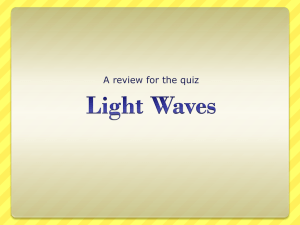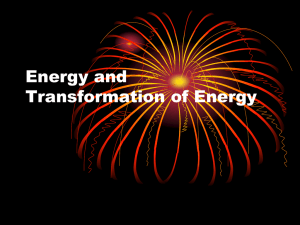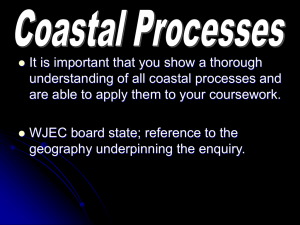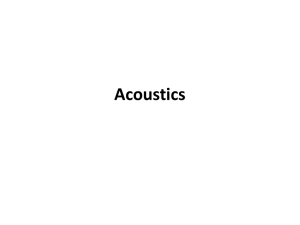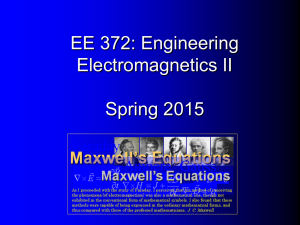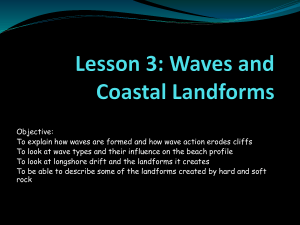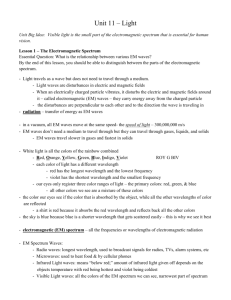Sound and Light Chapter 17
advertisement
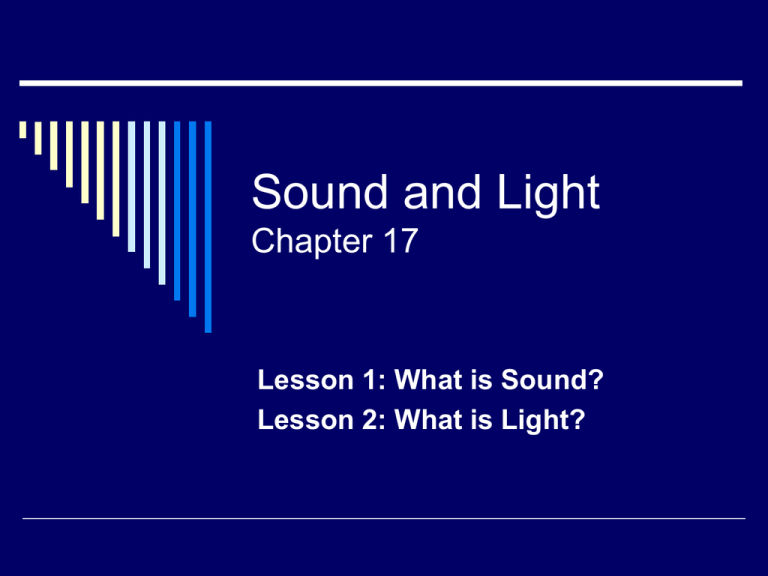
Sound and Light Chapter 17 Lesson 1: What is Sound? Lesson 2: What is Light? Lesson One Vocabulary Vibration- a back-n-forth movement of matter Volume- the loudness of a sound Pitch- how high or low a sound is Frequency- the number of vibrations per second Lesson 1: Sound Sound is energy that travels through the air. A vibration is a back and forth movement of matter. The vibrations make the air vibrate and this is what you hear. Lesson 1: Sound The loudness of a sound is called volume. Volume is measured in decibels (dB). A high decibel sound is loud and has a lot of energy. Lesson 1: Sound Sound waves move through the air as waves. Some sounds are high while other sounds are low. A sound’s pitch is how high or low the sound is. The number of vibrations in a second is the frequency of a sound. Frequency and pitch are related. A sound with high frequency has a high pitch and a low pitch has a low frequency. Lesson 1: Sound Sound waves move in all directions from an object. A sound that hits a hard surface bounces back and it called an echo. You can often hear echoes in caves and canyons. Lesson 1: Sound Sound waves move like dominoes; when you push one, the next one falls down. Sound waves move this same way. They travel through the air because particles in the air give energy to the ones nearby. Sound can travel a long distance but the particles stay in the same place. Lesson 1: Sound Any kind of matter can vibrate and carry sound. Matter that carries sound is called a medium. Sound waves need a medium to travel. The speed of sound depends on the medium. Sound travels fastest in solids and slowest in gases. Sound also moves faster when it’s warm that when it’s cold. Lesson 1: Sound Animals can hear sounds that humans cannot hear. Dogs can hear high pitched sounds. Bats have excellent hearing and when they fly they produce sound which bounces off objects. The bat can hear its echoes and this allows the bat to fly in the dark. Cool! Lesson Two Vocabulary Reflection- the bouncing of heat or light off an object Opaque- Not allowing light to pass through Translucent- allowing only some light to pass through Transparent- A material that allows light through Refraction- the bending of light as it moves from one material to another Concave lens- a lens that is thicker at the edges than it is a the center Convex lens- a lens that is thicker at the center than at the edges Lesson 2: Light Light is a form of energy that travels in waves. Unlike sound, light does not need a medium to travel. Light is part of the electromagnetic spectrum and the part that we can see is called visible light. The waves that make up the spectrum have different frequencies. Lesson 2: Light Light waves are different from sound waves. Light waves move like ocean waves because they move up and down. Light waves can travel through matter or through empty space. Light moves thousands of times faster than sound. It only takes 8 minutes for light travel from the sun to Earth. Lesson 2: Light You can feel energy in sunlight as heat. You can also feel the heat from a light bulb. The sun and the light bulb both send out light in all directions. But a laser gives off light in a narrow beam which is very powerful because the waves are close together. Lesson 2: Light When light hits an object, the objects affects the path of the light. The object can absorb the light, make it bounce back, or let it pass through. Lesson 2: Light Reflection occurs when light bounces off a surface. In most cases, light spreads out when it is reflected. But a smooth surface does not spread out and this is why you can see yourself in a mirror. Lesson 2: Light Most objects absorb some light and reflect the rest. Opaque materials do not let any light pass through them. You cannot see through opaque objects. Most objects around you are opaque, like you shoes, your desk, and a book. Lesson 2: Light Transparent materials let light pass through. Most kinds of glass are transparent. Translucent materials only let some light pass through. Stain glass windows are translucent. The difference between transparent and translucent is how they spread out light. Translucent materials spread more light. Lesson 2: Light When light moves from one material to another, it bends. This bending is called refraction. Refraction changes the angle at which you see things. Have you ever looked at a straw in a glass of water? It seems to bend where the straw enters the water. This is refraction. Lesson 2: Light A convex lens is thicker at the center that it is at the edges. It bends light waves to bring them together. A convex lens makes images bigger. Lesson 2: Light A concave lens is thicker at the edges. This lens spreads light waves apart. This lens makes an object look smaller.




